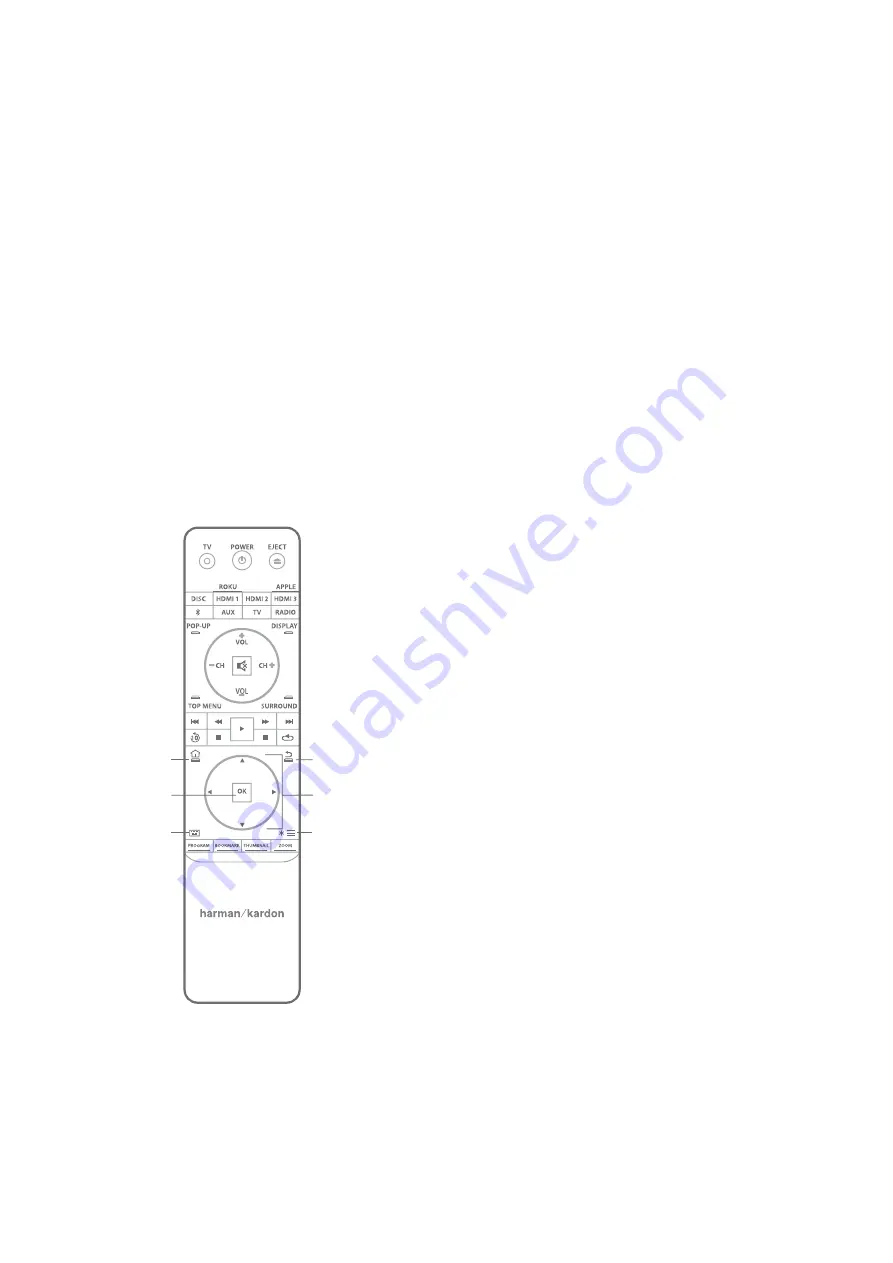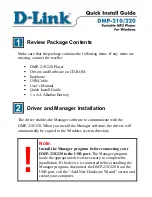
BDS 280S/580S
Remote Control Functions
NOTE:
•
Apple devices should be connected only to the Front panel USB port
for the audio playback.
•
This USB port is rated for 500 mA output and it suggests that
it is certified to charge iPhone and iPod devices. There is a USB
connector on the front panel as well with similar functionality,
rated for 2.1A to additionally charge iPad devices.
15. Network Connector:
Use a Cat. 5 or Cat. 5E cable (not supplied) to connect the
BDS system’s Network connector to your home network to enjoy content from AirPlay,
DLNA, and streaming services, as well as control from the Harman Kardon Remote app
for iOS and Android. Additionally, system upgrades can be downloaded and installed
from compatible devices that are joined to the network.
16. WPS Button
: You can connect to the Internet using the WPS button.
17. AC Power Input
: After you have made and verified all other connections, plug the
supplied AC power cord into this input and into an unswitched AC outlet.
Remote Control Functions
HOME
BUTTON
BACK
BUTTON
OK
BUTTON
KEYBOARD
BUTTON
CURSOR
CONTROLS
OPTIONS
BUTTON
Power Button
: The BDS system has four different power modes:
•
OFF (ON/Standby indicator not illuminated): When the rear-panel Main
Power switch is in the OFF position or the power cord is unplugged the BDS
system is off and will not respond to any commands. Plugging the power
cord into a live AC outlet and setting the Main Power switch in the On
position will put the system into the Standby mode.
•
Standby (Power indicator glows weak amber): The Standby mode mini-
mizes energy consumption when you are not using the BDS system. AirPlay
does not break-in with the unit in Standby mode. When the system is in
Standby, pressing the Power button turns it ON. To put the system into
Standby when it is ON, press the Power button for more than two seconds.
NOTE: To conserve energy you can have the system automatically enter the
Sleep mode whenever no control buttons have been pressed and no audio
signal has been present for 15 minutes.
•
Sleep (Power indicator glows solid amber): The Sleep mode mutes the BDS
system’s outputs and shuts off its OSD and front-panel display, but allows
the system to automatically turn on and play audio in response to a signal
from an AirPlay device or a Bluetooth device. When the system is in Sleep,
pressing the Power button turns it on. To put the system into Sleep when it
is ON, press the Power button momentarily.
•
ON (Power indicator glows solid white): When the BDS system is ON, it is
operational.
TV Power Button
: After you program the remote control, pressing this button turns
the TV’s power ON and OFF.
Eject Button
: Press this button to eject a disc from the BDS system’s built-in disc player.
Before pressing this button, make sure no objects are blocking the disc slot opening.
Source Buttons
: Press one of these buttons to select a source device. This action will
also turn on the BDS system from the Standby mode.
•
The first press on the Aux button switches the BDS system to the last-used
of the sources such as Coaxial Digital, Optical Digital 1, Optical Digital 2,
Analog Audio I, Analog Audio 2, and HDMI ARC. Each successive press ad-
vances the BDS system through those sources. Pressing the Aux button also
places the remote into the auxiliary-component control mode, enabling the
remote to use any pre-programmed and/or learned functions.
NOTE: You must use the Home menu to select network-based sources (DLNA,
Pandora® and Picasa™).
Pop-Up Button
: Pressing this button while playing a Blu-ray Disc recording or DVD
displays its disc menu.
NOTE: This feature is disc-dependent. Not all DVDs have pop-up menus. If a
DVD has no pop-up menu, pressing the Pop-Up button may display the disc
menu, depending on how the disc’s menu system is authored.









































